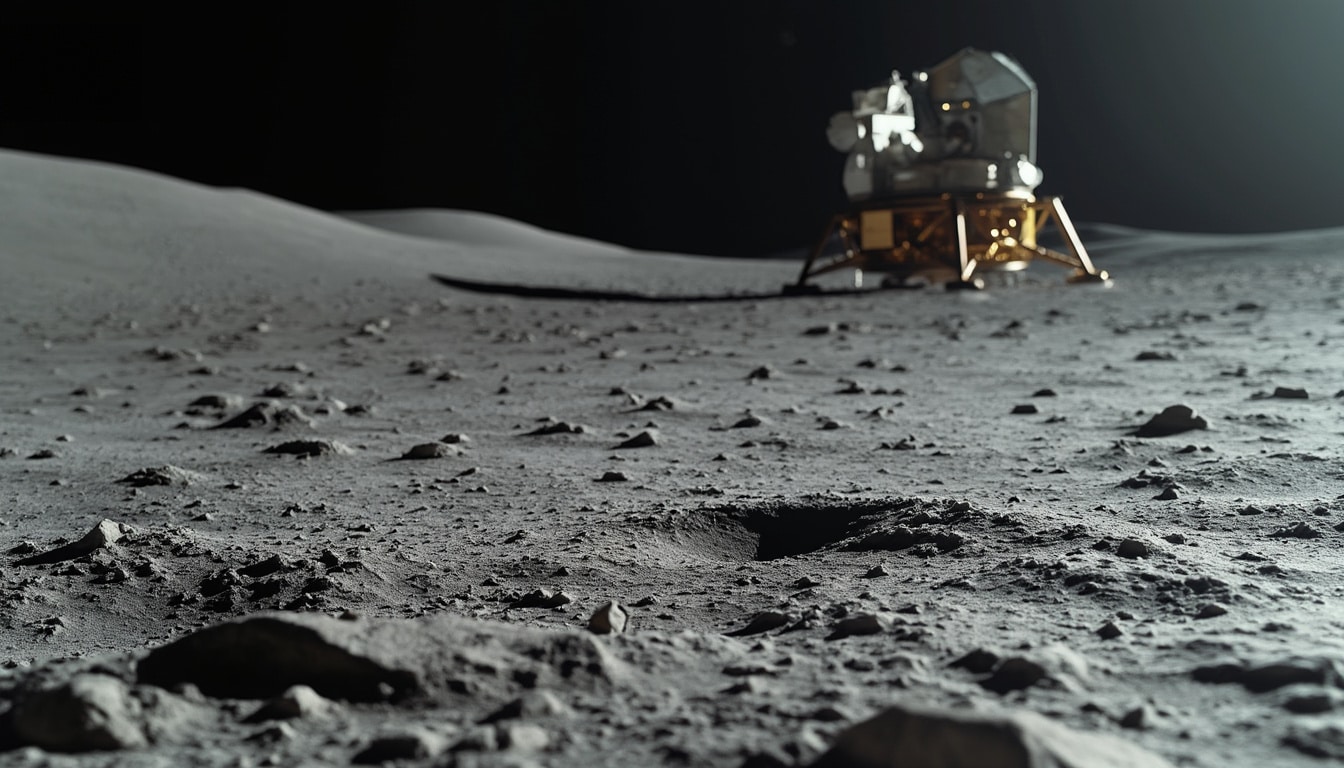The recent demonstration of NASA’s revolutionary Electrodynamic Dust Shield (EDS) marks a crucial development in safeguarding lunar missions from the persistent challenge of lunar dust, also known as regolith. This technology, which was successfully tested on the moon’s surface by the Firefly Aerospace Blue Ghost lander, shows promising potential for future lunar explorations and human habitation. With the growing ambitions of space agencies like NASA, SpaceX, and Blue Origin, addressing the challenges posed by abrasive lunar dust becomes increasingly vital for long-term missions.
Understanding Lunar Dust and Its Challenges
The moon is coated in a fine layer of abrasive dust, a byproduct of millennia of meteoritic bombardment. This regolith poses serious risks to both human explorers and the equipment deployed on lunar missions. Spacesuits can be compromised by the dust’s abrasive qualities, and machinery such as rovers and landers can face operational failures if dust infiltrates sensitive components. The challenge is not merely cosmetic; it is a critical safety and operational issue that NASA and its partners, including Lockheed Martin, Boeing, and Northrop Grumman, have to continuously address as they plan future missions under the Artemis program.

How Does the Electrodynamic Dust Shield Work?
The Electrodynamic Dust Shield operates through a system of electrodes and electric fields that assist in the removal of dust particles from various surfaces. By applying an electrical charge, the EDS can effectively repel lunar dust, preventing it from accumulating on vital equipment such as solar panels and communication instruments. NASA’s testing of the EDS occurred aboard the Blue Ghost lander, which successfully touched down on the moon on March 2, 2025.
Initial tests on the ground revealed that the technology could remove dust from surfaces under controlled conditions. The real challenge was proving its effectiveness in the harsh lunar environment, where conditions differ dramatically from Earth. The successful demonstration on the lunar surface indicated that the EDS could sustain its performance despite these variations.
The Importance of EDS for Future Lunar Missions
With NASA planning to establish a sustained human presence on the lunar surface, the efficacy of EDS could pave the way for longer missions and potentially facilitate human settlement on the moon. The dust shield technology can safeguard key components from abrasive wear, enhancing the longevity and reliability of equipment critical for lunar exploration.Future lunar bases will rely on various technologies, including robotics and remote operations, to minimize human exposure to hazardous conditions. The success of the EDS could signal a shift in how additional technologies and innovations in aerospace are integrated into future lunar missions, thanks to collaborations between NASA and commercial partners like Raytheon Technologies and Aerojet Rocketdyne.
The Collaboration Between NASA and Private Partners
The synergy between NASA and private companies enhances the design and efficacy of technologies essential for lunar exploration. SpaceX, Blue Origin, and other commercial entities contribute significantly to the evolving landscape of lunar missions. Their capabilities, coupled with NASA’s extensive research resources, result in innovative solutions tailored to current challenges.
Testing the Technology
Testing is often carried out in various environments to simulate lunar conditions. The EDS underwent rigorous assessments during the Materials International Space Station Experiment (MISSE-11) in 2019, allowing researchers to observe its performance in a microgravity environment. The lunar demonstration represents a continuation of this testing, confirming that the system can effectively mitigate the hazards of dust on the moon’s surface.
NASA’s achievements get considerably amplified through its partnerships. Projects that benefit from this collaboration often see significant advancements in the speed of development and application of new technologies. For example, universities and research centers often provide insights into improving designs and ensuring efficacy, while companies focus on scaling the prototypes into working systems.
Future Prospects and Implications
The future implications of the EDS technology extend beyond the moon. International space agencies, including those in Europe and Asia, can adapt such technologies for Mars and other celestial bodies with dust challenges. The potential collaboration—nationally and internationally—fuels an exciting era of exploration that embodies a united vision of advancing human knowledge and capability beyond Earth.
| Key Features of the Electrodynamic Dust Shield | Description |
|---|---|
| Functionality | Uses electric fields to remove dust particles from surfaces. |
| First Lunar Test | Demonstrated successful operation on March 2, 2025. |
| Collaborative Efforts | Developed in partnership with various aerospace companies and research centers. |
| Applications | Can protect spacesuits, rover instruments, and habitats on the moon and beyond. |
| Future Use | May support human habitation and operations beyond the moon, including Mars missions. |
The Future of Lunar Exploration and the Role of Innovative Technologies
The integration of technologies like the Electrodynamic Dust Shield into lunar programs positions NASA and its partners at the forefront of space exploration. The implications involved go beyond just lunar missions; significant learnings from these projects will inform future hardware designed for Martian exploration. Understanding and tackling the challenges posed by lunar dust is a vital aspect of sustaining long-term human activities off-planet.
The Artemis Program and Beyond
The Artemis program symbolizes NASA’s robust ambitions to return humans to the lunar surface and lay a foundation for future exploration beyond Earth. As we move toward advanced lunar bases, the implications of effective dust management methods become increasingly crucial. Resources will have to be conserved, operational capabilities maximized, and human safety ensured.
The findings from the successful demonstration of the EDS are likely to accelerate plans for the Artemis missions. Furthermore, advancements in robotics and artificial intelligence will offer new capabilities for lunar missions. The potential for robotic systems—developed by companies like Lockheed Martin and Blue Origin—to autonomously gather crucial data and perform repairs could redefine our approach to exploration.
The Path Forward for NASA
In conclusion, NASA’s efforts, bolstered by collaborations across the space industry, lead to critical advancements in technologies that will serve vital roles in future lunar missions. Continuous support from private firms and technological innovations will play pivotal roles in shaping successful explorations—including potential human settlements—on the moon and beyond.

While lunar dust remains a challenge, NASA’s resilience and commitment to developing effective solutions like the Electrodynamic Dust Shield hold the promise of safeguarding future missions. The ongoing advancements herald a new era of exploration, fostering hope, curiosity, and the relentless pursuit of understanding our cosmic neighborhood.




Leave a Reply